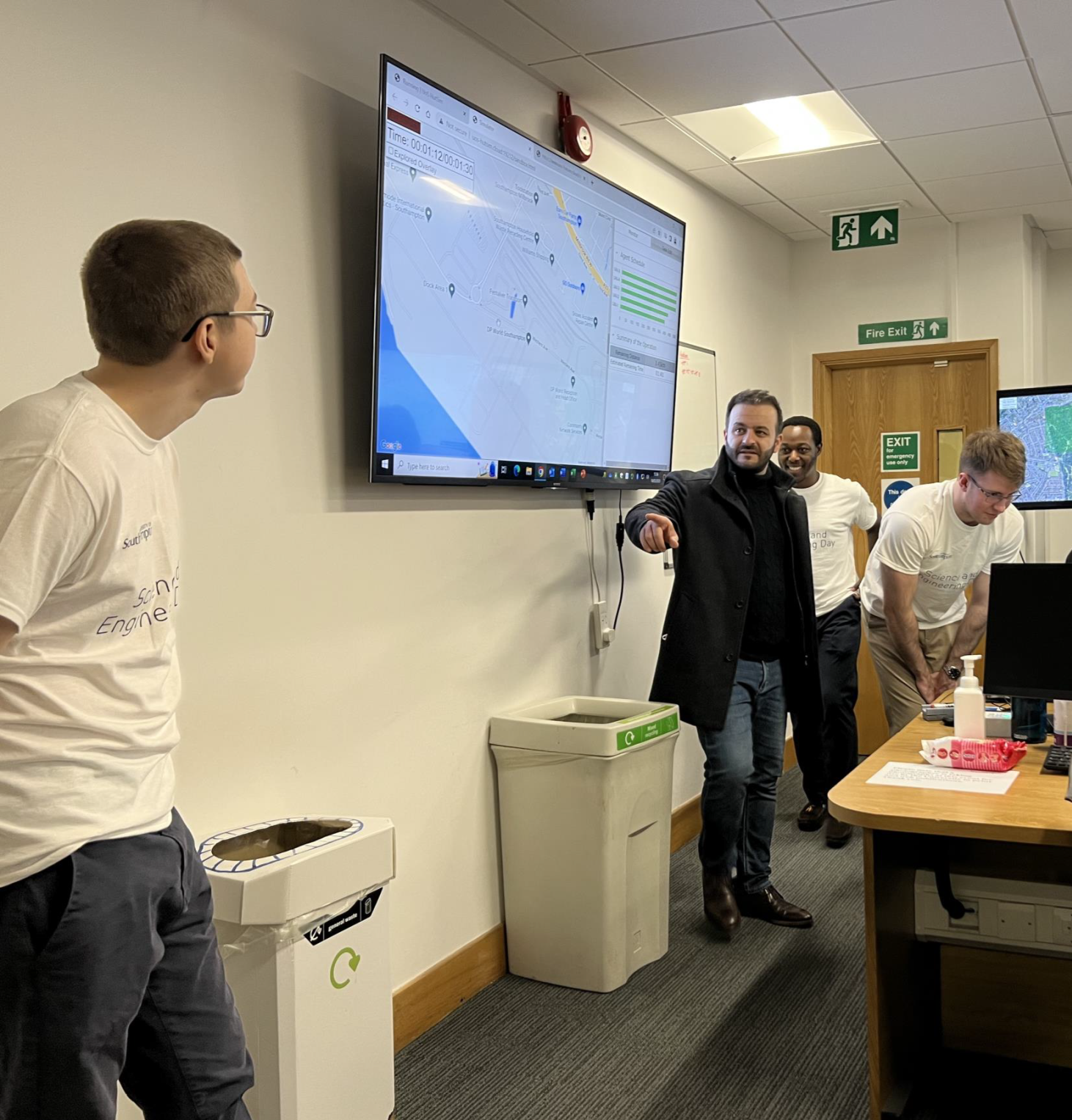
TAS researchers shortlisted for XPRIZE
The TAS team, called “Texas-Soton” are designing a coordinated aerial swarm to transform wildfire response capability. This test work is achieving containment within 10 minutes across 1,000 km² – with the potential to protect lives and ecosystems with unprecedented speed and precision when needed.
The XPRIZE Wildfire is a four year competition incentivizing the innovation of firefighting technologies that will end destructive wildfires. The prize aims to transform current wildfire management approaches through the development of new technologies that can rapidly and accurately detect, characterise, and respond to wildfires, before they become destructive.
The TAS “Texas-Soton” team was shortlisted for an XPRIZE by the Wildfire’s independent judging panel as one of 29 Qualified Teams to advance to the next round.
Dr Mohammad Soorati, Assistant Professor of AI at the University of Southampton, TAS funded Co-lead and the UK team lead said: “We will build the fastest response system to wildfire to suppress fires in incipient stages, so they don’t develop into large destructive stages. The fastest response available with the existing technology reaches 40-minute response time, while ours is 10 minutes. Fire can spread quickly to a level that is almost impossible to stop, so every minute counts.
“We are very thankful to our funders, including the Trustworthy Autonomous Systems Hub and the Defence Science and Technology Lab, whose support enabled us to start this work early and reach this significant milestone. “It shows how successful interdisciplinary collaborations have the potential to lead new technologies worldwide by drawing in the right skillsets across four universities. For example, at the University of Southampton we are designing the sensors with Professor Julian Leyland and Dr Gareth Roberts at the School of Geography and Environmental Science, the UAVs with Professor James Scanlan, Dr Bob Entwistle, Dr Oliver Westcott and Dr Sergio Araujo-Estrada at the School of Engineering and the control through Dr Klaus-peter Zauner and myself at the school of Electronics and Computer Science.
The Texas team is working on fire sensing technologies and medium-payload UAVs, TU Delft is involved in path planning of the UAVs, Texas A&M Forest Service is advising us on the existing fire suppression techniques and the University of Edinburgh is our fire science partner, helping us understand the fire behaviour and modelling.
A TAS international sandpit event allowed them to meet one of these partners. The TAS “Texas-Soton” team submitted a Qualifying Technical Submission, a written proposal detailing the teams’ solutions to the competition challenge and a plan for meeting the competition goals. The judges independently evaluated and rated these submissions, before convening to determine which teams presented the strongest and most viable solutions.
Dr Soorati added: “We are delighted to be shortlisted for this milestone award. We will work with our European and US partners over the next two years to build the system and send it for final trial in July 2026. It is evidence of the impact the TAS research grant is having in bringing institutions and skills together to tackle important, environmental challenges such as forest fires.”
The XPRIZE Wildfire Judging Panel is composed of external experts who possess the subject matter experience to evaluate, verify, and validate the teams’ solutions. It includes professionals in fire science and management, fire aviation, uncrewed autonomous systems, remote sensing, engineering, and more.

Picture above: Dr Soorati and team demonstrate their human swarm systems at the University of Southampton’s Science and Engineering Festival.